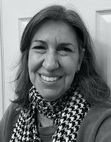Meredith Allard's Blog, page 13
July 14, 2021
Down Salem Way is on a Virtual Book Tour!
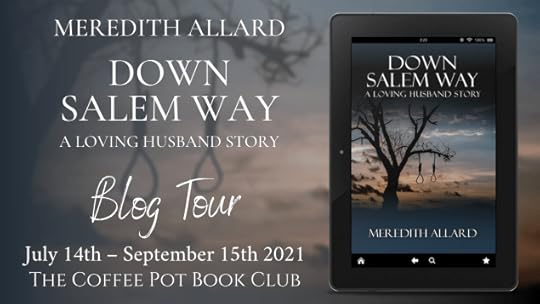
With the upcoming release of The Duchess of Idaho, Book Five of the Loving Husband Series, I thought it was a good time to celebrate Down Salem Way, the prequel to the Loving Husband Trilogy. The virtual book tour, hosted by the fabulous Coffee Pot Book Club, will include excerpts, reviews, exclusive blog posts, and interviews.
Unlike the three books of the Loving Husband Trilogy, which have dual timelines between the Salem Witch Trials, the Cherokee Removal, and the internment of Japanese-Americans during World War II and the present day, Down Salem Way is strictly historical fiction. Down Salem Way is James Wentworth’s diary as he experiences the madness of the Salem Witch Trials and falls into an all-consuming passion for his wife, Elizabeth–a love that will transcend time.
Down Salem Way has a different feel than the first three Loving Husband books, and readers have really responded to this insight into James’ life during the Salem Witch Trials. If you’re a fan of the first three Loving Husband books, I hope you love Down Salem Way just as much. If you’re looking for the next book that will have the same past and present storyline as the Loving Husband Trilogy, look no further than The Duchess of Idaho, which will be released soon. No official publication date for The Duchess of Idaho yet, but you’ll be the first to know!
I hope you’ll join me on this virtual book tour. I’m looking forward to seeing you!
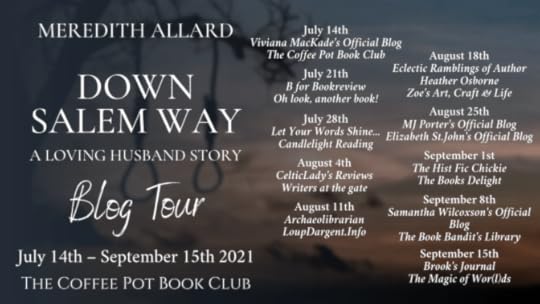 Blog Tour Schedule
Blog Tour ScheduleJuly 14th
Viviana MacKade’s Official Blog
The Coffee Pot Book Club
https://www.coffeepotbookclub.com/blog
July 21st
B for Bookreview
https://bforbookreview.wordpress.com/
Oh look, another book!
https://ohlookanotherbook.blogspot.com/
July 28th
Let Your Words Shine…
https://maryannbernal.blogspot.com/
Candlelight Reading
https://candlelightreadinguk.blogspot.com/
August 4th
CelticLady’s Reviews
https://celticladysreviews.blogspot.com/
Writers at the gate
https://frigsakebooks.blogspot.com/
August 11th
Archaeolibrarian
https://archaeolibrarian.wixsite.com/website
LoupDargent.Info
August 18th
Eclectic Ramblings of Author Heather Osborne
https://heatherosborneauthor.com/blog/
Zoe’s Art, Craft & Life
https://craftygasheadzo.blogspot.com/
August 25th
MJ Porter’s Official Blog
Elizabeth St.John’s Official Blog
http://www.elizabethjstjohn.com/
September 1st
The Hist Fic Chickie
The Books Delight
https://www.thebookdelight.com/
September 8th
Samantha Wilcoxson’s Official Blog
https://samanthawilcoxson.blogspot.com/
The Book Bandit’s Library
https://yourbooksoryourlife.blogspot.com/
September 15th
Brook’s Journal
https://www.brookallenauthor.com/blog
The Magic of Wor(l)ds
https://themagicofworlds.wordpress.com/
Visit my Down Salem Way page on Pinterest to see some of my story ideas and inspirations.
Buy Down Salem Way…July 7, 2021
Cooking The Oregon Trail: Johnnycakes
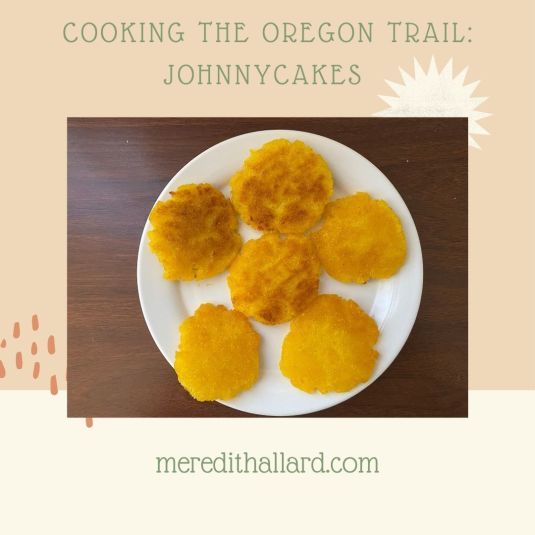
I’ve lost track of the number of times I’ve said that if I weren’t doing what I’m doing, I’d be a food historian. When I wrote Painting the Past: A Guide for Writing Historical Fiction, I waxed poetic on the charms of cooking recipes from the historical era you’re writing about. I love to cook so cooking historical recipes is something I enjoy.
As I’ve been researching the Oregon Trail for the next installment of the Loving Husband Series, one of the things I’ve realized is that the eating wasn’t always all that good. While the men would hunt to supply their company with meat, and while there were a few forts along the 2000-mile journey where the pioneers might be able to replenish their supplies, for the most part, the travelers had what they carried with them. Barrels of flour and cornmeal were necessities, and that was with the hope that the ingredients didn’t spoil or become infested with creepy crawlies.
One popular meal during the journey was a cornmeal pancake called Johnnycake. There are a number of different theories about where the name Johnnycake came from. I like the definition that the Johnny in Johnnycake is a shortening of the word journey since the cakes are easy to make and carry around. Johnnycakes were popular during the American Civil War as well, and modern versions are still widely eaten.
Since I wanted to taste some of the flavors of the Oregon Trail, I put on my wanna-be food historian’s hat and made a batch of Johnnycakes. I used this recipe from The Daring Gourmet as the basis for my Johnnycakes. This particular recipe is quick and easy to make, which I wanted because I wanted to try to keep the recipe as authentic as possible. Of course, I use modern-day appliances and ingredients that I bought in the grocery store. Keep in mind that even this recipe uses more ingredients than the Johnnycakes they ate on the Oregon Trail.
On the Oregon Trail, the Johnnycakes might be very simple, made by mixing ground cornmeal with water and frying it over an open fire. If sugar, butter, and salt were available, they might be used as well. Food on the Oregon Trail was meant to be sustenance. It wasn’t meant to be fancy or even great-tasting depending on what ingredients were available. Since I wanted to actually taste the Johnnycakes to get a sense of what they ate on the Oregon Trail, I used ingredients with flavor.
Here are the ingredients from The Daring Gourmet:
1 cups cornmeal, stone-ground white or yellow3 tsp granulated sugar1/2 tsp salt2 tbsp butter2 1/2 cups water, boiled Everything I used to make the Johnnycakes.
Everything I used to make the Johnnycakes. Making the Johnnycake mixture was similar to baking cookies. You whisk the dry ingredients and add them to the liquid (in this case boiling water).
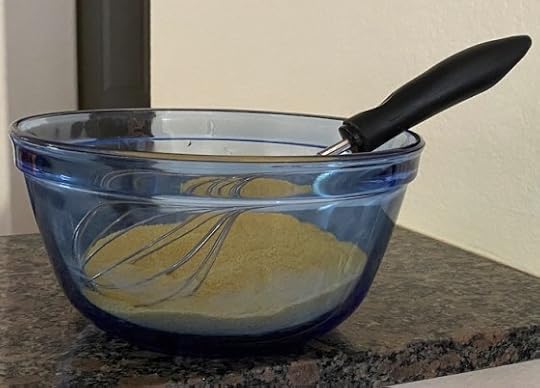 Whisking the cornmeal, sugar, and salt.
Whisking the cornmeal, sugar, and salt.First, I put the water on to boil. While waiting, I whisked the dry ingredients together. Once the water was boiling, I added the dry ingredients and continued whisking. Then I added the two pats of butter and continued whisking until the batter was smooth.
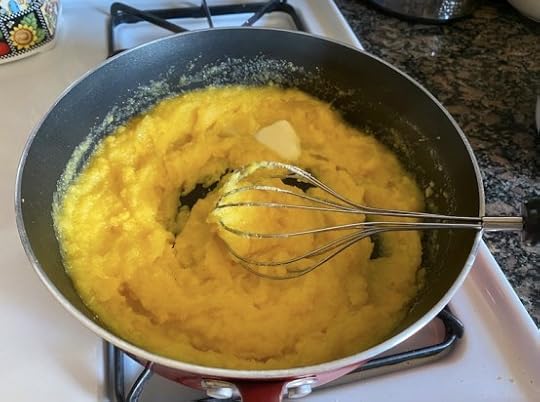 Adding the butter to the thick batter.
Adding the butter to the thick batter. After I whisked the butter into the batter, I let it rest for 15 minutes while I did the dishes. I’m not the neatest cook in the world, but I like things to be tidy as soon as I’m done! The mixture thickens while it sits and after 15 minutes I had something resembling thick cake batter. Then I heated some vegetable oil in a frying pan.
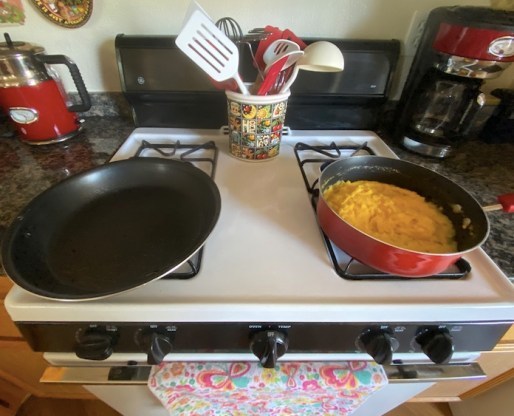 Warming up the frying pan.
Warming up the frying pan. 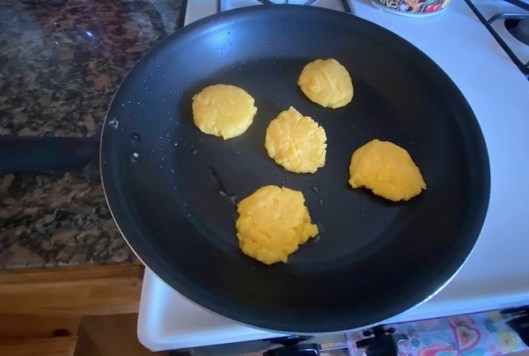 Frying the Johnnycakes.
Frying the Johnnycakes.I formed the Johnnycakes into silver dollar-sized patties and fried them. Then I flattened them with a spatula so that they would cook more evenly. You need to wait for the cakes to brown before you flip them over, or else they’ll fall apart, as I can attest to. The process is similar to when I make latkes during Hannukah. When the cakes were browned and crispy on both sides, I set them out on a plate covered with paper towels to absorb the excess oil.
 Fried Johnnycakes, ready to eat!
Fried Johnnycakes, ready to eat!You’ll notice that some of the Johnnycakes are darker than others, but we have a difference of opinion in my house of how crispy things should be. I love the cakes crispier and darker because I think there’s more flavor in the crust. Let the Johnnycakes cool down before you dig in. I nearly burned the inside of my mouth because I was so impatient to try them, and also they taste better after the excess oil has had a chance to drain away.
The Johnnycakes are simple to make and delicious to eat. They taste like cornmeal pancakes. You can eat them with butter, jam, or even maple syrup. Quite frankly, I ate them without any adornment because I didn’t think they needed anything else. The cornmeal, salt, sugar, and butter give the pancakes enough flavor, at least the way I made them.
I imagine the westward-traveling pioneers in the mid-1800s sitting around their campfires after a long day of driving the wagons or walking alongside. Maybe there aren’t a lot of supplies available, maybe the men haven’t been successful hunting, or maybe the fort didn’t have a lot of supplies to trade for, but the women can scrounge some cornmeal and maybe a sprinkle of sugar and a pinch of salt. I can see them around their campfires frying the Johnnycakes. The Johnnycakes are hearty and filling, and I can see now why the cornmeal cakes were such an important meal for the pioneers on the Oregon Trail.
I think I’ll have some of those Johnnycakes with my dinner tonight.
June 30, 2021
An Artist Date: The Van Gogh Immersive Experience
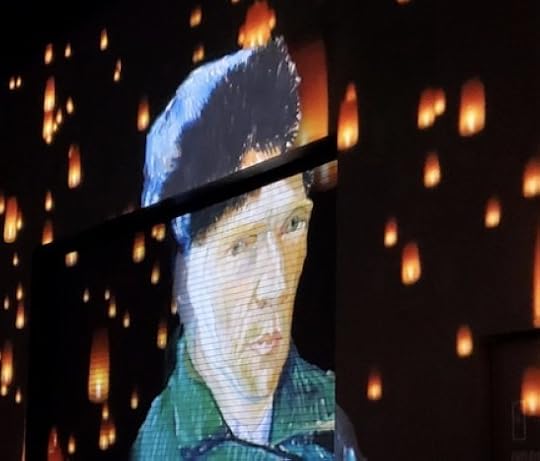
Since reading The Artist’s Way I have made a point of having artist’s dates. According to Julia Cameron’s website, “The Artist Date is a once-weekly, festive, solo expedition to explore something that interests you…Artist Dates fire up the imagination. They spark whimsy. They encourage play. Since art is about the play of ideas, they feed our creative work by replenishing our inner well of images and inspiration.”
I fell in love with art as a sophomore in college when I took an art history class. I didn’t know much about art then, but the class fulfilled a liberal arts requirement so I grabbed it. The class covered the earliest cave paintings in France through the Roman Empire. I remember how the professor seemed so ancient to my 19-year-old eyes but was probably in his mid-forties, not old at all now of course. He was a slight, slender man in khaki pants, polo shirts, and sweaters tied around his neck though it was summer in the San Fernando Valley in California and close to 100 degrees Fahrenheit.
I don’t think I’ve ever seen anyone as excited about their subject as that professor was. He spoke with such enthusiasm, describing the hieroglyphics inside the Egyptian pyramids as though they were indeed handed down by the gods. The professor led a class expedition to the J. Paul Getty Museum and I remember being completely enchanted as I studied the Greek statues and pottery. I found the professor, and his subject, endearing, and it was because of that class I developed a lifelong love for art.
I’ve always felt a special connection to Van Gogh, as so many others have. While I’m hardly comparing what I do to what he did, I do feel a certain camaraderie with him because I also try to do something different with my art, something that hasn’t been done before, at least not exactly in that way. I try to show things the way I see them rather than the way I think I’m supposed to see them. There’s something about his use of colors, brushstrokes, and emotions that is truly unique. One glance at one of his paintings and you know it’s a Van Gogh.
Whenever there’s a Van Gogh exhibition nearby, I always visit. This week I saw the Van Gogh Immersion Experience at Area 15 here in Las Vegas. I’ve never seen anything like it.
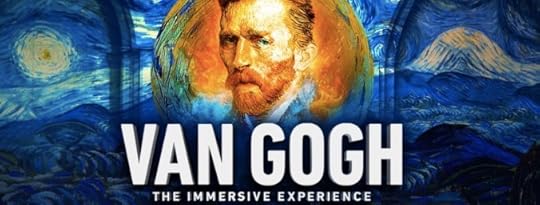
The exhibit is in a large room with tables and chairs, and you sit down, order a drink (diet coke for me), and watch as Van Gogh’s sketches and paintings come to life on the walls around you. The images morph from one scene to another, and the video display even appears to be 3D in places.
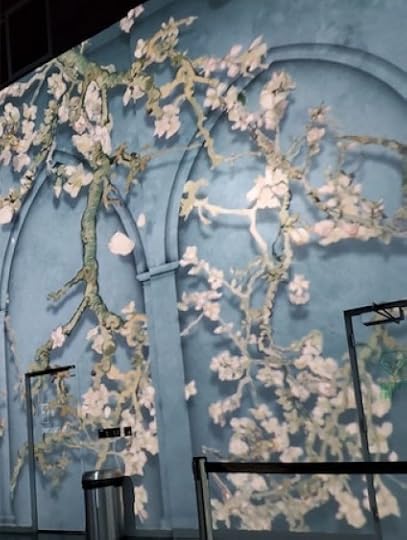
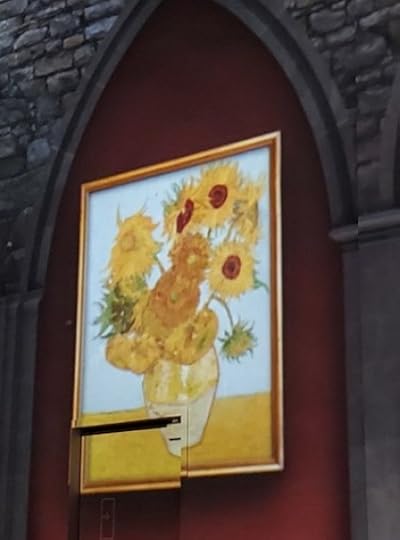
The pictures don’t really do the display justice. Here’s a brief video from Area 15 that shows the imagery to a better advantage.
There’s a similar Van Gogh immersion experience happening in London now. If the display comes to an area near you, and you love art, Van Gogh, or you’re looking for a unique Artist Date, I highly recommend it. It’s a pleasant way to spend time admiring the genius that is Van Gogh while finding inspiration for our own artistic endeavors.
June 22, 2021
Researching Historical Fiction: The Old Las Vegas Mormon Fort
 The Old Las Vegas Mormon Fort in Downtown Las Vegas
The Old Las Vegas Mormon Fort in Downtown Las VegasI finally made it to the Old Las Vegas Mormon Fort in Downton Las Vegas. I’ve been living in the Las Vegas area for nearly 20 years now and this is the first time I’ve visited the Mormon Fort. The weather has been over 100 degrees Fahrenheit for a few weeks now, there was one day with a break in the weather so I thought that would be a great time to finally see the landmark.
Even though The Duchess of Idaho takes place on the Oregon Trail in 1850, I had a feeling I could still learn a lot from visiting the Mormon Fort, and I was right.
According to the park’s website, the Old Las Vegas Mormon Fort was the first non-native settlement in the Las Vegas Valley in Southern Nevada. The exterior structure features the remains of an adobe fort built by Mormon missionaries along what was a spring-fed creek in 1855, but which today is little more than a running flow of mud. After all, we are facing severe drought here in the western United States.
In the middle of the 19th century, the creek provided irrigation for fields and orchards. The 150 square foot outpost served as a way station for travelers in a similar way that the seven forts along the Oregon Trail, including Fort Laramie, Fort Bridger, and Fort Boise, provided rest and a chance to replenish depleted supplies for the westward-bound pioneers.
As a state park, the Old Las Vegas Mormon Fort is small, but it has a lot of interesting historical information, especially for someone like me who is writing a story set during this time period. One of my favorite spots was the recreation of a ranch house from the mid 19th century. Don’t be surprised if this room ends up in The Duchess of Idaho!
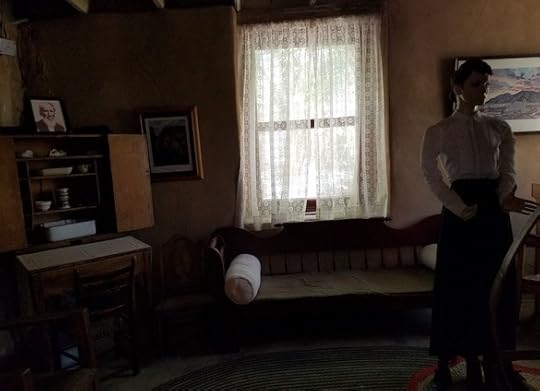
I also loved the wagon sitting in the courtyard of the fort. Although the wagon is missing a white canvas cover, I could still picture pioneers walking alongside a vehicle similar to this one as they made their way West.
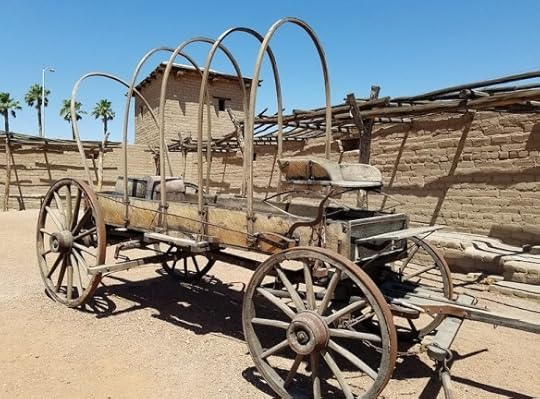
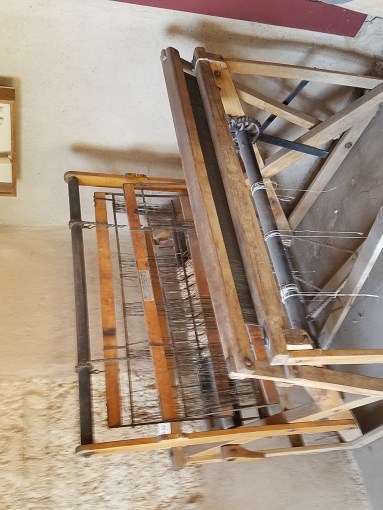 A loom in the ranch house
A loom in the ranch houseI found many other goodies in the museum and I took pictures of everything from cooking utensils, to the vehicles, to a wax figure of a mid 19th century U.S. soldier, to a piano, to a spinning wheel. I know that as I work to bring the Oregon Trail to life, everything I saw at the Old Las Vegas Mormon Fort will be extremely helpful. I’m inspired by images, and the photographs will allow me to describe what I saw for my readers.
It isn’t always necessary to board an airplane to find interesting places for historical research. Sometimes we can find gems right in our own backyard.
June 1, 2021
What I’m Reading
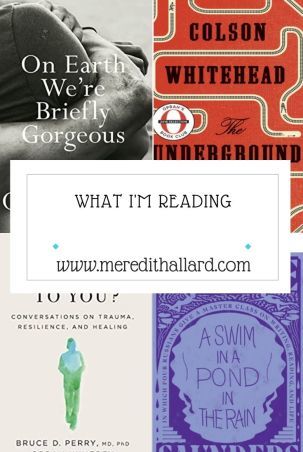
It felt like a long slog getting to summer this year, but finally, here we are. Since summers in Las Vegas are so hot, it’s a great time to stay inside and read. I saw a funny tweet from Random House the other day that said, “The CDC says fully vaccinated people can still cancel plans to stay home and read.” Good thing!
I’ll be spending a lot of my time over the next few months consumed by research about life on the Oregon Trail, and listening to Los Angeles Dodgers games, but I’m always sure to carve out non-research reading time. I’ve already loaded my Kindle with some great books.
Here are some of the books that have caught my attention lately.
On Earth We’re Briefly Gorgeous by Ocean Vuong
Vuong is a poet, and you can tell from his beautifully constructed sentences and vivid imagery. If you love to read lyrical, poetic language, as I do, then you will love this book. Beyond the language is a moving story about a young man learning to feel comfortable in his own skin. It’s also about the struggles of traumatized immigrants who left a war-torn Vietnam to make a different life for themselves in the U.S.
The Underground Railroad by Colson Whitehead
I had this novel downloaded on my Kindle for a while, but with the release of the movie, which I want to watch, I decided to read the book first. I finally started reading it and I’m so glad I did.
What Happened To You? by Dr. Bruce Perry and Oprah Winfrey
I’ve only recently started learning about the effects trauma has on the brain. This book is more specifically about childhood trauma and how it can influence our psychological development, and it’s an insightful and interesting combination of the scientific aspects, as shared by Dr. Perry, and the human aspects, as shared by Oprah. This book is the perfect companion to Oprah’s series on Apple TV, The Me You Can’t See. If you or someone you know has suffered from trauma, you may find this book particularly helpful.
A Swim in a Pond in the Rain by George Saunders
This is another book I’ve had on my Kindle for a while and it’s next on my TBR list. I loved Saunders’ novel Lincoln in the Bardo and when I saw that he had a new book about Russian literature and the power of stories I knew I had to read it. I studied storytelling as part of my Ph.D. dissertation, and it’s a subject I remain fascinated with.
These are just a few of the books on my summer reading list. I’m sure I’ve bought more books than I can finish in the next two months, but that’s okay. We book lovers do tend to buy books faster than we can read them. I’m looking forward to spending some time relaxing with an iced tea by my side and a good book in my hands.
May 23, 2021
I’m on Anne R. Allen’s Blog Today!

Anne R. Allen is one of the few bloggers I’ve been following for years. If you’re a writer, you need to check out her website. I love her practical, down-to-earth tips for writers as well as her humorous approach to the joys and pitfalls of the writing life.
Anne was kind enough to give me some space on her blog today to share some of what I’ve learned about submitting to literary journals. After all, I’ve been running The Copperfield Review for 20 years now.
Here is my post for Six Tips for an Outstanding Literary Journal Submission. If you learn something from the post, or if you have questions for me, or if you just want to say hello, let me know in the comments! I’ll see you there.
May 12, 2021
Creative Inspiration–The Oregon Trail
Now that I’ve spent some time building up my general knowledge about the Oregon Trail, I’m starting to learn more about the culture of the era, which is always one of the most fun parts of writing historical fiction for me. I enjoy discovering how people lived during whatever era I’m writing about, so it’s a good thing I write historical fiction.
It finally occurred to me that Oregon Trail took place during the Victorian era, a time I’m particularly familiar with. Readers of my Hembry Castle books are not at all surprised by that statement. Yes, it should have been obvious that the Oregon Trail took place during the Victorian era since the majority of the travelers made their journeys from the 1840s through the 1880s, but when I think of the Victorian era I think of England. I hadn’t even considered what was happening in the U.S. during that time. Many of the same attitudes and social mores that defined the Victorian era in England took root on this side of the Pond as well, which I noticed mainly in the attitudes by and about women.
LIfe on the Oregon Trail was well-documented. There are numerous primary sources written by women pioneers as they noted the joys, the struggles, and the monotonous nature of their journey. The diarists kept track of births, deaths, and illnesses. They described their days walking beside the wagons and their nights around the campfires. A number of women, especially those from the east, struggled with maintaining Victorian decorum in the rather undignified situations they often found themselves in as they traveled 2000 miles over rugged, difficult terrain.
The more I learn about the Oregon Trail, the more I’m glad I decided to set The Duchess of Idaho during this time. Here are some of the places I’ve found creative inspiration about the Oregon Trail so far:
Nonfiction:
Covered Wagon Women: Diaries and Letters From the Western Trails, 1840-1849 by Kenneth L. Holmes (Editor). This book contains numerous primary sources written by women as they traveled the trail.
The Pioneers by David McCullough
The Oregon Trail: A New American Journey by Rinker Buck
The Oregon Trail: An American Saga by David Dary
The Prairie Traveler: A Handbook for Overland Expeditions by Randolph B. Marcy. This is a primary source originally published in 1859 and used as a guidebook for pioneers traveling west.
Fiction:
I was amused to discover so many romance novels set during the Oregon Trail. Who knew that the Oregon Trail was a popular sub-genre of historical romance? I haven’t read any of them yet since romance isn’t generally my genre, but if you’re looking for some historical romances you might check some out.
So far, the only novel I’ve read is A Light in the Wilderness by Jane Kirkpatrick, which I liked because of the details about life on the Oregon Trail. I have Willa Cather’s O Pioneers downloaded onto my Kindle but I haven’t read it yet. That one is next on my TBR list. I’m currently on the lookout for other novels about pioneers even if they’re not specifically about the Oregon Trail.
I can also read some of my favorite Victorian-era novels (yes, Dickens had a number of novels published by 1850, and he was just as beloved in the U.S. as he was in England) as examples of what people were reading then.
Music:
YouTube is a great resource for historical music. I found one video called “Oregon Trail 1852 Fiddling Music” that I’ve listened to a few times. “Oh! Susanna!” which I learned in elementary school was a brand-spanking-new tune (penned by Stephen Foster in 1848) as the pioneers traveled the Oregon Trail.
Oh! Susanna!
Now don’t you cry for me
As I come from Alabama
With this banjo on my knee
Today we’d recognize the fiddle music that was popular then as being similar to bluegrass. There wasn’t much room in the wagons for musical instruments, but those who could play fiddles or banjos often brought them along. Funnily enough, the soundtrack to the Oregon Trail video game is pretty good listening. Again, who knew? I should probably check out the video game. I’ve read it can be pretty addicting, and I remember when it seemed like everyone was playing the Oregon Trail game. Now seems like a great time to try it.
Documentaries:
The first thing I do when I’m studying a new period in American history is look to see if Ken Burns has a documentary about it.
So far, I’ve watched Burns’ Lewis and Clark, about the American explorers who were the first to travel the 2000 mile journey to the Pacific Ocean. I’ve also seen Burns’ The West, which is about the settling of the western part of the U.S., largely at the expense of the native people who already lived there. Although only a small part of the documentary was specifically about the Oregon Trail, it gave me great insight into the pioneering spirit that drove thousands of people to make a new home for themselves far from everyone and everything they knew.
Burns also has a documentary about the Donner Party, an ill-fated group that met numerous hardships on the Oregon Trail. I haven’t watched it yet, but I have it set aside and I’ll watch it soon.
There’s so much more for me to do as I immerse myself in the era of the Oregon Trail. I have clothing, shoes, and hairstyles to explore, recipes to cook, more music to listen to, and I’m searching for any TV shows or films to watch. Of course, I’m always on the lookout for more books to read. I have a fairly large list of scholarly articles that I’m using for specific areas of research, and I’ve started to read a few and take notes.
I’m also going to visit the Mormon Fort here in Las Vegas this summer. While the Mormon Fort itself is not from the Oregon Trail, it’s from the Mormon Trail, it’s still from the same time period when my novel takes place. There were a number of forts along the Oregon Trail, and I’m sure I can find some interesting information from a visit.
This is always my favorite part of writing historical fiction—immersing myself in the era as much as I can. The more I feel as though I’ve traveled to that time in history, the more I hope I can bring my readers along with me. I have a lot more creative inspiration to discover, and I’ll share more of what I find here.
April 19, 2021
Happy Anniversary, James and Sarah: Her Dear & Loving Husband is 10 Years Old Today
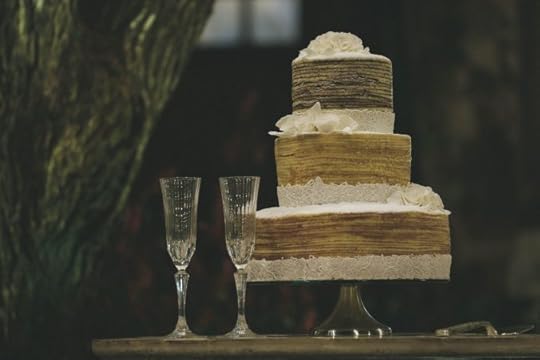 Photo by Tikkho Maciel on Unsplash
Photo by Tikkho Maciel on UnsplashI can hardly believe this as I write it, but this very day, April 19, 2021, marks the tenth anniversary of the publication of Her Dear & Loving Husband. As of this writing, more than 200,000 copies of Her Dear & Loving Husband have been purchased. Every day readers around the globe discover James and Sarah’s story of eternal love. Many of those readers go on to read the rest of the series, and many ask for more James and Sarah stories. It makes my heart glad to know that James and Sarah continue to find new fans after a decade.
I talked a bit in this post about how I nearly gave up writing for good. For those of you who might be new to my blog, my journey with James and Sarah Wentworth began in 2007 when I was teaching middle school U.S. history. In the school hallways, I’d see girls holding these black books with an apple on the cover. Finally, I asked one of my students about the book, and she said, “Oh, it’s Twilight. Don’t you know Twilight?” I didn’t, and I asked her to tell me about it. As soon as she mentioned vampires I tuned out because I wasn’t into vampires. Yeah, I know. But at the time I associated vampires with horror stories, and I’m not into the horror genre. Then I heard a few fellow teachers rave about the book, giggling over it like our teenaged students.
A few weeks later, another student tossed Twilight onto my desk. “I’ve read that book too many times,” she said, “and I have to find something else to read. You can read it.” I appreciated the gesture, and I didn’t want to hurt her feelings, so I figured I’d take the book home, skim through it enough to get some character names, and then say how much I loved the story when I returned the book to its owner.
As I skimmed the pages (okay, here’s a Bella…there’s an Edward…) I thought some parts looked interesting enough so I read the whole book. Even though Twilight is meant for young adult readers, I found the story endearing enough to decide that maybe vampires weren’t all bad. Yes, in case you’re wondering, I did end up reading the whole Twilight series. If I hadn’t read the Twilight books, I never would have watched True Blood on HBO, and it’s more accurate to say Her Dear & Loving Husband was inspired by True Blood.
There’s an episode early in the first season of True Blood (I think it’s episode four, but don’t quote me) where vampire Bill is giving a talk at Sookie’s grandmother’s church. Someone shows Bill a picture of his family from his human days before the American Civil War, and Bill becomes so emotional at the remembrance of them. That’s what clicked my brain into gear. Here’s this vampire who has everything humans only dream of—extraordinary strength, immortal life—and yet he becomes so emotional at the sight of the ones he loved as a human. After that episode, I wondered…what happens to a vampire who lives forever? Obviously, the humans he loved would have died somewhere along the way. Would he forget about them and go on? Would he have trouble moving on? What if he fell in love again? What would that look like, and who would he fall in love with? If he was so in love with his wife, could he ever love anyone else?
I didn’t have any immediate sense that there was something tangible like a novel in those oddball daydreams. I like to tell stories, and I’m always kicking scenarios around this empty head of mine, most of which come to nothing. When I was still thinking of this vampire idea six months later, I decided to see if there was anything to it. Between watching True Blood, reading Charlaine Harris, Anne Rice, Bram Stoker, and the Twilight books, believe me, I had a brain full of vampire waiting to get out. Luckily for me, that vampire turned out to be James Wentworth.
The exact date I began writing was April 15, 2009. It was a Wednesday. I remember the date because I was off for Spring Break that week. I had just come back from a few days in my hometown, Los Angeles, to spend some time by the beach. Back home in Vegas, I woke up that Wednesday morning and the crazy vampire idea was distracting me again. I made myself eggs, toast, and coffee, sat down at the computer, and started typing out whatever I knew about this vampire and the woman he loved. The story had a working title—The Vampire’s Wife.
In case you were wondering, James’ birthday is April 19 because that was the day he found his name in 2009 and it’s also the day the book was published two years later in 2011.
Next, it became a matter of deciding where the story would take place. At the time I had no sense that this story would move back and forth between the past and the present. In my initial conception of the story, it was going to be a present-day love story between a vampire and the woman he loves. It turns out that choosing the setting of Salem, Massachusetts was the most important decision I made while writing Her Dear & Loving Husband since that’s where the historical fiction came in.
It’s because of the James and Sarah superfans that the rest of the series exists. At first, I thought Her Dear & Loving Husband would be a stand-alone book. Then as I started writing I realized that it was actually a trilogy. And then fans kept asking for more.
The cool thing about this 10th anniversary is that I know there is more to the story; in fact, I’ve found a few more angles from which to continue the Wentworths’ tale of eternal love. I’m giving the first draft of The Duchess of Idaho, Book Five in the series, some baking time, so I’m letting it rest a bit. But then it’s back to James and Sarah’s world, and Grace’s world (Grace is James and Sarah’s daughter, for those who might not know). It’s fun seeing how the paranormal world still affects the Wentworths even after James’ transformation. What transformation? You’ll have to read Her Loving Husband’s Return, Book Three in the series, to find out.
In some ways, it seems like yesterday when Her Dear & Loving Husband was published. In other ways, so much has changed. I will always be grateful to the James and Sarah fans who saw something wonderful in this love story that transcends time. I had a feeling, over the two long years it took me to write Her Dear & Loving Husband, that there was something in this story that readers could connect to. I had a feeling readers would like it if only they had a chance to read it.
If you have not yet had a chance to read Her Dear & Loving Husband, you can download a free copy from BookFunnel here.
I will always love the readers who continue, even after a decade, to ask for more James and Sarah. The simple truth is I wouldn’t still be doing this without you. Thank you.
Here’s to another ten years together.
April 12, 2021
Giving Your Story the Time it Needs
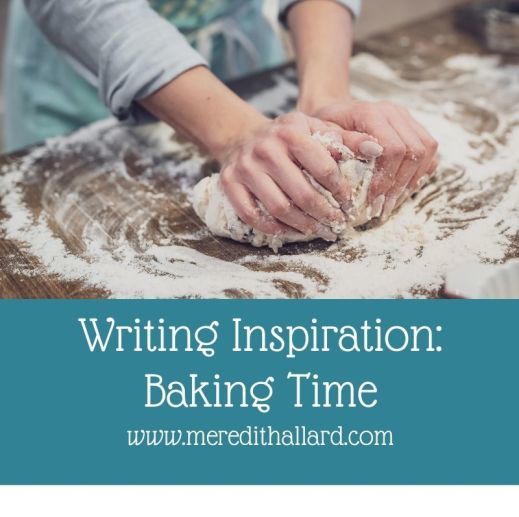
The first draft for The Duchess of Idaho is done. It took me ten weeks to finish. For me, that is crazy fast. I mean, lightning speed. I wrote in this post about how it used to take me months to write my outline, months to write my first draft, and months to make it all pretty-like. These days I’ve hit a faster stride with my writing.
Now, with the dreaded first draft complete, DOI is tucked away in a warm, safe, dark place, covered by a kitchen towel (okay, not really—it’s tucked away in a computer file) completing its “baking time.”
I find that my stories need time to come together. I need time to roll them, knead them, press them this way and that. Then I have to decide which shape I like better. Then they need to rise again. I need this time away from the manuscript because even though I have a clearer idea of what the story is about, I still have a lot of work to do. “Baking time” allows me space to do that work.
Most of what I write in the first draft will be changed, rearranged, or deleted. My first drafts are merely the story in its most basic form with hardly any description, no historical details, and a bit of dialogue. The first draft is my brain’s way of working through the first layer of the story. Then, after some time away, I can see my story more clearly and begin to peel away the outer layers so I can dig deeper.
This time away is what I refer to as “baking time.” This time between drafts, the “baking time,” is important for my writing process.
I read a lot during the “baking time.” I’m currently looking for books written during or about the Oregon Trail. There are a number of primary sources—journals written by women as they traveled the trail. I’ve started reading some of the journals and they are providing great insight into what the women were thinking and feeling during the dangerous journey. I just watched the documentaries Lewis and Clark and The West by Ken Burns. Both documentaries provided insight into the pioneering spirit. Burns also has a documentary about the Donner Party, the doomed pioneers on the Oregon Trail, so I’ll be watching that too. I’ve reread a few of the Little House books, and I’ve been watching the TV show. Again, they’re not specific to the Oregon Trail, but they still have inspirational value. I started a private board on Pinterest about the Oregon Trail, and I’ve found some great book recommendations about the westward expansion, examples of food and clothing, detailed maps of the trail, and other goodies. In Las Vegas, there’s a historical site called the Mormon Fort that dates from 1850. Although the fort isn’t part of the Oregon Trail, I’m sure I’ll find some useful information when I visit. I’m also listening to music that would have been played along the trail, largely fiddle music similar to what we would call Bluegrass.
I enjoy the “baking time” because it’s fun—I’m immersing myself in the time period. Reading other authors, learning new information, seeing the clothing and the covered wagons, listening to the music, and watching the movies and documentaries, all of it gives me an abundance of ideas for when I revise my story. Not everything will end up in the novel, but it doesn’t matter. Everything works together to provide a framework I can use to revise my story so it’s the best it can be.
I have to play tricks on myself to get the first draft written, but I push through because I know that the second draft is so much more of a joy. This break between the first and second draft costs me some time, and it means I write more slowly than others, but it’s time well spent.
I used to worry that I wasn’t writing quickly enough because I took a deliberate break from my story. Over the years, though, I’ve come to terms with my “baking time.” Bringing stories to life is what I love most, and the baking time allows me to do that.
Writing Inspiration: Baking Time (Because Your Story Needs Time to Rise Too)
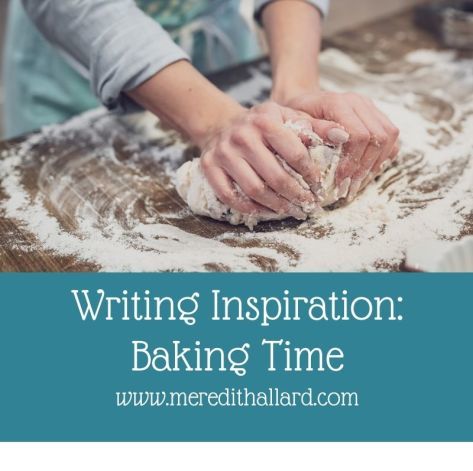
The first draft for The Duchess of Idaho is done. It took me ten weeks to finish. For me, that is crazy fast. I mean, lightning speed. I wrote in this post about how it used to take me months to write my outline, months to write my first draft, and months to make it all pretty-like. These days I’ve hit a faster stride with my writing.
Now, with the dreaded first draft complete, DOI is tucked away in a warm, safe, dark place, covered by a kitchen towel (okay, not really—it’s tucked away in a computer file) completing its “baking time.”
I find that my stories need time to germinate. I need time to roll them, knead them, press them this way and that. Then I have to decide which shape I like better. Then they need to rise again. I need this time away from the manuscript because even though I have a clearer idea of what the story is about, I still have a lot of work to do. “Baking time” allows me space to do that work.
Most of what I write in the first draft will be changed, rearranged, or deleted. My first drafts are merely the story in its most basic form with hardly any description, no historical details, and a bit of dialogue. The first draft is my brain’s way of working through the first layer of the story. Then, after some time away, I can see my story more clearly and begin to peel away the outer layers so I can dig deeper.
This time away is what I refer to as “baking time.” This time between drafts, the “baking time,” is important for my writing process.
I read a lot during the “baking time.” I’m currently looking for books written during or about the Oregon Trail. There are a number of primary sources—journals written by women as they traveled the trail. I’ve started reading some of the journals and they are providing great insight into what the women were thinking and feeling during the dangerous journey. I just watched the documentaries Lewis and Clark and The West by Ken Burns. Both documentaries provided insight into the pioneering spirit. Burns also has a documentary about the Donner Party, the doomed pioneers on the Oregon Trail, so I’ll be watching that too. I’ve reread a few of the Little House books, and I’ve been watching the TV show. Again, they’re not specific to the Oregon Trail, but they still have inspirational value. I started a private board on Pinterest about the Oregon Trail, and I’ve found some great book recommendations about the westward expansion, examples of food and clothing, detailed maps of the trail, and other goodies. In Las Vegas, there’s a historical site called the Mormon Fort that dates from 1850. Although the fort isn’t part of the Oregon Trail, I’m sure I’ll find some useful information when I visit. I’m also listening to music that would have been played along the trail, largely fiddle music similar to what we would call Bluegrass.
I enjoy the “baking time” because it’s fun—I’m immersing myself in the time period. Reading other authors, learning new information, seeing the clothing and the covered wagons, listening to the music, and watching the movies and documentaries, all of it gives me an abundance of ideas for when I revise my story. Not everything will end up in the novel, but it doesn’t matter. Everything works together to provide a framework I can use to revise my story so it’s the best it can be.
I have to play tricks on myself to get the first draft written, but I push through because I know that the second draft is so much more of a joy. This break between the first and second draft costs me some time, and it means I write more slowly than others, but it’s time well spent.
I used to worry that I wasn’t writing quickly enough because I took a deliberate break from my story. Over the years, though, I’ve come to terms with my “baking time.” Bringing stories to life is what I love most, and the baking time allows me to do that.

